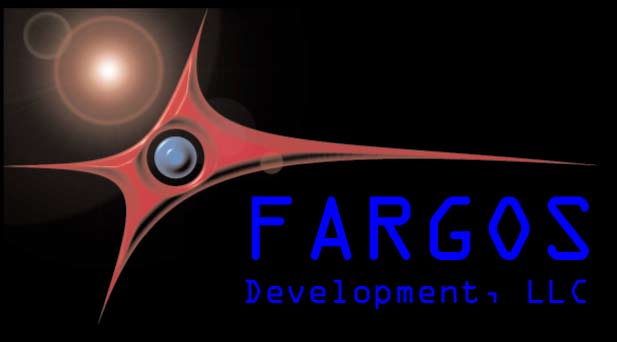
FARGOS Development, LLC's operations are predominantly within the Northeast and Midwest of the United States as a consequence of physical points of presence in the New York City, Boston and Detroit metropolitan areas. Our senior developers have a minimum of 20 years development experience apiece and have a wide range of R&D activities to their credit. These including Cray-2 mathematical libraries for various US Government labs, contributions to the Andrew File System, network management systems for the National Science Foundation Network, intrusion detection software, authoring of Internet RFCs, operating system implementations, compiler construction, etc.
A description (for visually-impaired readers) and interpretation of the FARGOS Development, LLC logos can be found on the About the FARGOS Logos page.
FARGOS is actually an acronym for Fantastic And Really Great Operating System. The original FARGOS was a multi-tasking operating system for the Zilog Z-80 that ran natively on TRS-80 Model I computers and dates back to 1985. Its successor was FARGOS/MP (MP = Multiple Processors), a symmetrical multi-processor operating system. Due to a lack of multiprocessor TRS-80 Model I's, FARGOS/MP ran on top of a simulator, which in turn was implemented as a process for Xenix 3.0 on the Tandy 6000. Due to memory limits in the generic Xenix 3.0 kernel, an optional curses-based GUI that simulated the video screen ran as a separate process and interacted with the TRS-80 Model I simulator using shared memory segments. In 1986, there was not a great need for TRS-80 Model I simulators, so that simulator most probably predates all of the TRS-80 simulators now available on the Internet today.
FARGOS/MP in turn was followed by FARGOS/VISTA (VISTA is an acronym for Various Interconnected Systems with Transparent Access), whose implementation was started in 1987 on top of an Apple Macintosh classic platform. It was not completed, but several of the ideas were put into IBM Research's DRAGONS (an acronym for Distributed Reliable Architecture Governing Over Networks & Systems). DRAGONS was developed in 1990 as the management platform for the proposed National Research and Education Network. In 1991, it was selected by the Open Software Foundation for its Distributed Management Environment and it was used for several projects and products both inside and outside of IBM. It was licensed by IBM to several third parties for either their internal use or to permit them to act as resellers of the technology and further IBM-driven development was ceased.
The FARGOS/VISTA™ name was resurrected for a brand-new system whose development was undertaken in 1999 and does not share any actual code with the original Apple Macintosh-based effort.
Developers familiar with DRAGONS will recognize some apparent similarities with the current FARGOS/VISTA, which is not surprising, given their common heritage; however, they are in fact quite incompatible. Not only do they not share a single line of code, FARGOS/VISTA's focus on providing security at the granularity of per-object/per-user/per-method necessitates a fundamentally different underlying architecture. DRAGONS does enjoy one significant advantage over FARGOS/VISTA and that is the many years of extensive testing and deployment in 24x7 production use that it had received. Someone interested in FARGOS/VISTA-like capabilities but unwilling to take a chance on a bug slipping through FARGOS Development's testing might attempt to locate a vendor authorized to sell DRAGONS. We'd rather have your business, though...